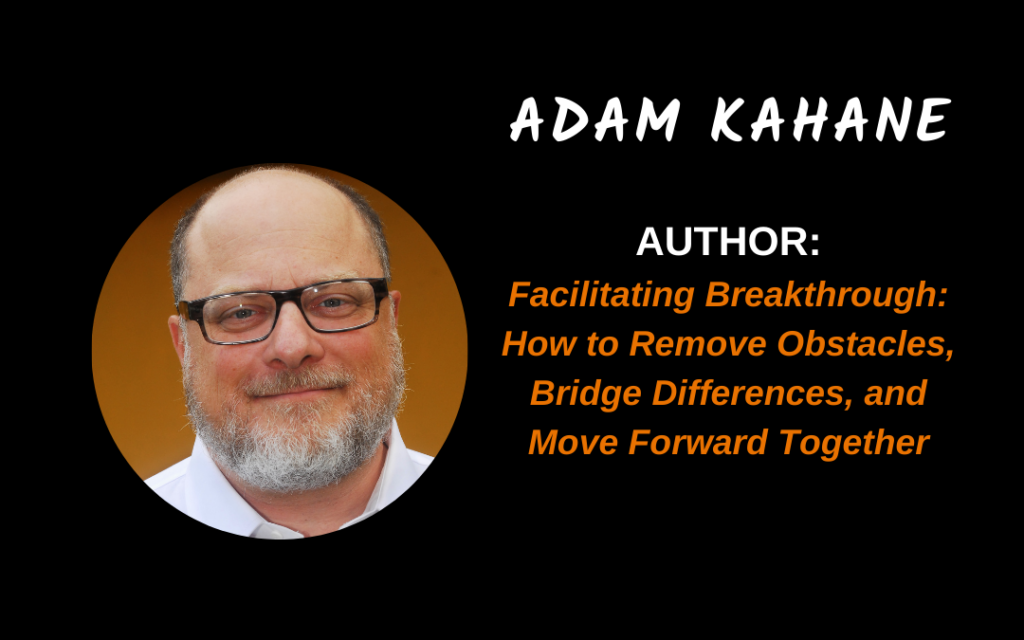In the working world, leaders and their teams face no shortage of challenges. Fortunately, according to Adam Kahane, great facilitators can lead their teams to meet these challenges head-on. If you and your team find yourself running into dead-ends when it comes to working together, listen in and learn about a fresh approach for removing the obstacles that hinder forward progression.
GUEST AT A GLANCE
Adam Kahane is a Director of Reos Partners, passionate process facilitator, and author of Facilitating Breakthrough: How to Remove Obstacles, Bridge Differences, and Move Forward Together. With extensive experience working in over fifty countries, Adam helps leaders of all kinds address their challenges head-on.

A QUICK GLIMPSE INTO OUR PODCAST
🔊 Podcast: Transform Your Workplace, sponsored by Xenium HR
🎙️ Host: Brandon Laws
📋 In his own words: “The Transform Your Workplace podcast is your go-to source for the latest workplace trends, big ideas, and time-tested methods straight from the mouths of industry experts and respected thought-leaders.”
WORKING TOGETHER
Working together is harder than ever. According to Adam Kahane, “people have different opinions and perspectives, and they’re less afraid than they used to be about expressing them — whether that’s in the workplace or community or politics.” But there is a solution. Adam says we need to “abandon the hope that you can control people or get them to do what you want them to do.” And we also need to invest in collaboration.
Adam’s basic premise is that the world needs “more and better collaboration and therefore more and better facilitation.” And that doesn’t just include professional facilitators or consultants. Lots of people have to play that facilitating role, whether they’re managers or team members or coaches or consultants. That means that learning about facilitation is necessary for anyone in a leadership role.
PODCAST EPISODE HIGHLIGHTS
What’s the Problem?
“The two most common kinds of facilitators both run into dead ends. The most common kind of facilitation is what I call vertical facilitation. It’s where you’re focused only on the group as a whole — the group’s task, the group’s leader, the group’s rules, the group’s perspective, the group’s solution, the group’s goal. And that makes sense. It’s not surprising that it’s common. […] But if that’s all you’re focusing on, you end up also with rigidity and domination, especially for the marginalized or minority members of the group who get told, ‘Get with the program. Be a team player.’”
“The other common way of facilitating is the opposite. I call it the horizontal way of facilitating. It’s where you focus not on the group as a whole, but on every member of the group — what they think, what they want, and what they’re trying to do, and ultimately on their free choice. And that also has a lot of advantages. It prioritizes diversity and agency, but if that’s all you’re doing, you end up with fragmentation.”
“If you’re trying to move forward together in a diverse group, you need to do something different than those two.”
The Breathing Metaphor
“Once I decided to write the book, I realized that this vertical approach and horizontal approach, they sound like a choice, but they’re not. They’re polarities like inhaling and exhaling. You don’t get committees in favor of inhaling and committees in favor of exhaling. Even though, at facilitator conferences, you get committees in favor of vertical and committees in favor of horizontal. But the breathing metaphor says we’ve got to do both of these. So what I’m calling transformative facilitation says that you need to use both the vertical and horizontal, not a compromise between them, but both of them alternately. And this isn’t really new. I’m not proposing a new way of facilitating. I think this is what all great facilitators do.”
Removing Obstacles
“I knew that it wasn’t about getting people to do things because, when I give talks on facilitation, a hundred percent of the time people will ask me, ‘How do you get people to do this or that? How do you get people to come together? How do you get people to open up? How do you get people to commit?’ And I realized that that wasn’t an accurate way of describing what I was doing. I knew that I was focusing on setting things up in a way that would enable people to move forward together, but I didn’t realize that what I was doing was removing obstacles. And so that one idea was like a bolt of lightning. I was removing obstacles to equitable connection and contribution.”
Unfolding Over Time
“I’m offering a bigger definition of facilitation. It’s not just professional facilitators. It’s anybody who’s helping a group move forward together. And it’s not just the person standing beside the flip chart or in the Zoom window. It’s all of the activities before, during, and after meetings that enable people to move forward together. And this may occur over days or decades — people just continuing to move forward, deal with issues, and find the next step.”
Intention is Key
“This approach is not useful if people don’t want to collaborate, if somebody just wants to tell other people what to do, or if people don’t want things to change. If people are trying to collaborate to affect change, then this method is useful. Anytime you have a diverse group that is trying to collaborate to create change, then this kind of facilitation will help you.”
LEARN MORE
Find out more about Adam Kahane by checking out REOS Partners and grab a copy of his book, Facilitating Breakthrough: How to Remove Obstacles, Bridge Differences, and Move Forward Together, wherever books are sold.
